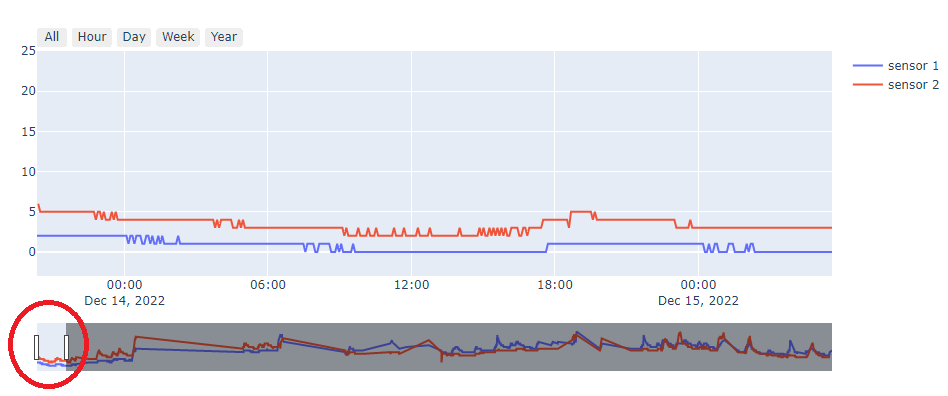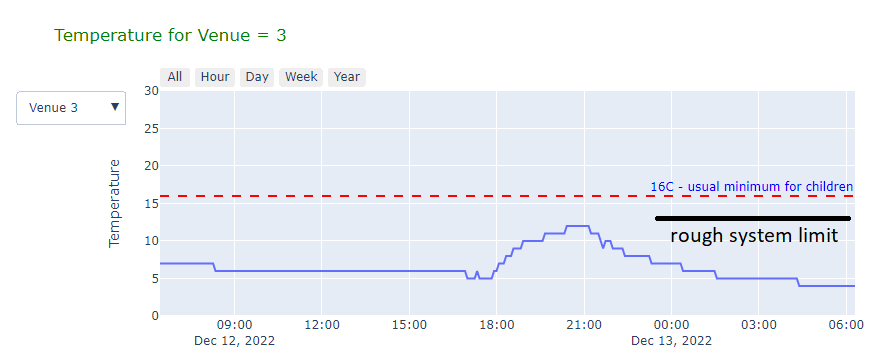Actual and potential high and low temperatures#
You can check how low the temperature goes in winter by focusing on a small enough region to see the highs and lows and then sliding the viewing window back and forth.

In this example, the minimum temperature needs discussion! We recommend telling the group what the low temperature is and asking whether they intend a minimum temperature in the space. This of course works best for groups that were monitoring in very cold weather, but you can get a very rough sense of where the indoor temperature might settle by thinking about what the external temperature was like when you observed the lows, what a winter low is like, and subtracting the difference. This might be enough to tell you whether you need to discuss having a better look in the next heating season. Then in your write-up, you could note what you found and whether anything about the building could be particularly delicate.
Similarly, you can use the slider to look at high temperatures. One question churches especially often ask is whether the temperature in a cold space could be made to go higher without making any big changes. You can judge this by whether the heating curve is starting to flatten out. This space gets to around 12C and would probably get to around 13C if left long enough, but that last degree would take a long time and be very expensive!

That top temperature will depend mostly on the external air temperature, but wind, sun, user behaviours like leaving doors open, and whether the building has been heated recently will all have an effect.
13C doesn’t feel a lot different from 12C or even 10C in this kind of space. Sometimes there’s an essential problem that can make a system perform badly like this - the wrong size of pipework or pump or a bad circulation design, a motorised valve stuck half open, sludge in the pipes, or poorly chosen boiler and heating control settings, for instance. Groups often install a larger boiler in response, but this isn’t usually the problem. Sometimes the problem is that the radiators or other heating appliances themselves aren’t big enough to deliver the required heat to the space fast enough to be practical.
Whatever the reason, the group isn’t getting much value from the energy they are putting in. If they modify the heating system in response, it will behave more efficiently and they’ll be more comfortable, but energy use won’t necessarily go down. Sometimes the building has high heat loss and the group should consider localised heating or a hybrid heating strategy instead.
